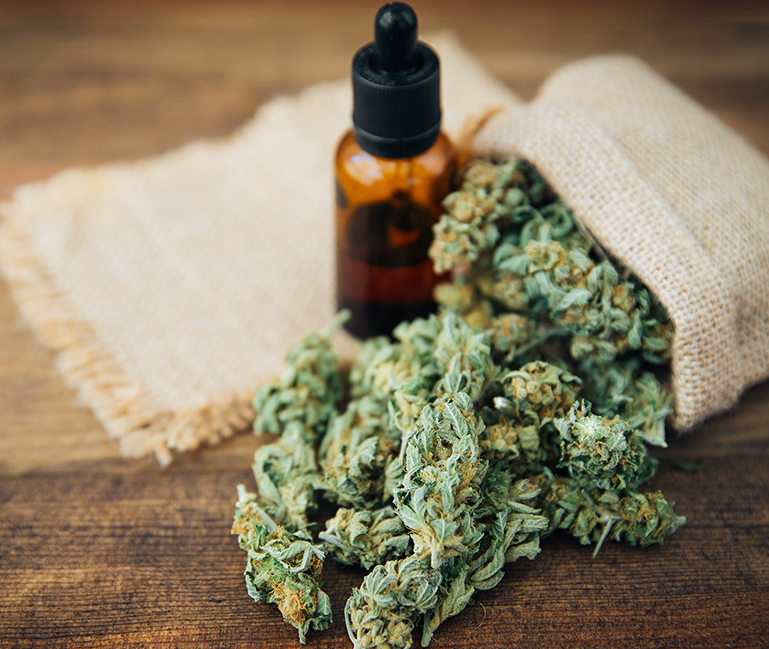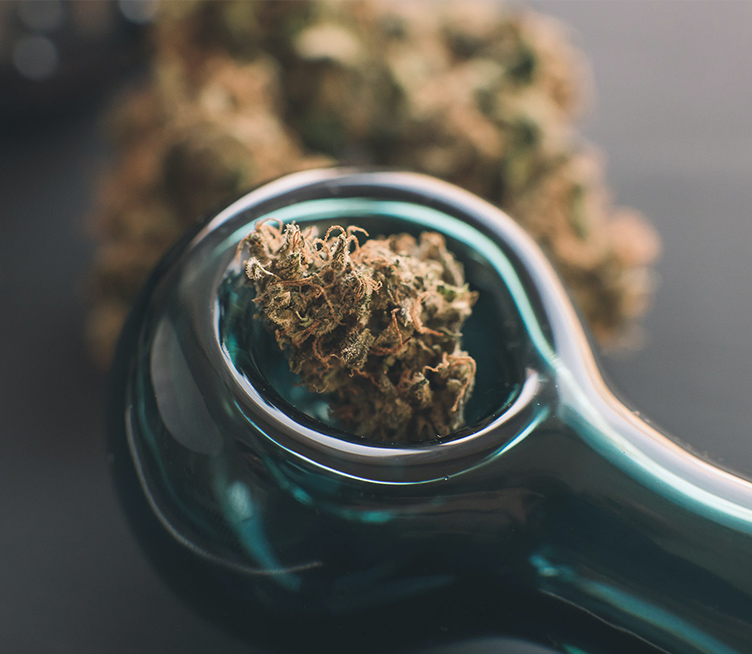Your cart is currently empty!
Medical Cannabis 101
Quality isn’t just THC
The Cannabis plant has a history of medical benefits
Cannabis is a plant-based, or botanical, product with origins tracing back to the ancient world. Evidence suggesting its use more than 5,000 years ago in what is now Romania has been described extensively.1 There is only one direct source of evidence (Δ6-tetrahydrocannabinol [Δ6-THC] in ashes) that cannabis was first used medicinally around 400 ad.2 In the U.S., cannabis was widely utilized as a patent medicine during the 19th and early 20th centuries, described in the United States Pharmacopoeia for the first time in 1850. Federal restriction of cannabis use and cannabis sale first occurred in 1937 with the passage of the Marihuana Tax Act.3,4 Subsequent to the act of 1937, cannabis was dropped from the United States Pharmacopoeia in 1942, with legal penalties for possession increasing in 1951 and 1956 with the enactment of the Boggs and Narcotic Control Acts, respectively, and prohibition under federal law occurring with the Controlled Substances Act of 1970.5,6,7 Beyond criminalization, these legislative actions contributed to creating limitations on research by restricting procurement of cannabis for academic purposes.
In 1996, California became the first state to permit legal access to and use of botanical cannabis for medicinal purposes under physician supervision with the enactment of the Compassionate Use Act. As previously stated, as of January 1, 2017, 28 states as well as Washington, D.C., Guam, and Puerto Rico will have enacted legislation governing medicinal cannabis sale and distribution; 21 states and the District of Columbia will have decriminalized marijuana and eliminated prohibition for possession of small amounts, while eight states, including Alaska, California, Colorado, Maine, Massachusetts, Nevada, Oregon, and Washington, as well as the District of Columbia, will have legalized use of marijuana for adult recreation.8,9
Tetrahydrocannabinol (THC), the principal psychoactive constituent of the cannabis plant, has low toxicity while the LD50 (dose of THC needed to kill 50% of tested rodents) is high. Acute effects may include anxiety
References
1. Bennett C. Early/ancient history. In: Holland J, editor. The Pot Book: A Complete Guide to Cannabis. Rochester, Vermont: Park Street Press; 2010. [Google Scholar]
2. Zias J, Stark H, Sellgman J, et al. Early medical use of cannabis. Nature. 1993;363:215. [PubMed] [Google Scholar]
3. Malmo-Levine D. Recent history. In: Holland J, editor. The Pot Book: A Complete Guide to Cannabis. Rochester, Vermont: Park Street Press; 2010. [Google Scholar]
4. Musto DF. The Marihuana Tax Act of 1937. Arch Gen Psychiatry. 1972;26:101–108. [PubMed] [Google Scholar]
5. Giancaspro GI, Kim N-C, Venema J, et al. The advisability and feasibility of developing USP standards for medical cannabis. U.S. Pharmacopeial Convention; [Accessed August 5, 2016]. Available at: www.usp.org/sites/default/files/usp_pdf/EN/USPNF/usp-nf-notices/usp_stim_article_medical_cannabis.pdf. [Google Scholar]
6. Cameron JM, Dillinger RJ. Narcotic Control Act. In: Kleiman MAR, Hawdon JE, editors. Encyclopedia of Drug Policy. Thousand Oaks, California: SAGE Publications, Inc; 2011. pp. 543–545. [Google Scholar]
7. Drug Enforcement Administration Office of Diversion Control. Schedules of controlled substances. (b) Placement on schedules; findings required. (1) Schedule I. Springfield, Virginia: U.S. Department of Justice; 1970. [Accessed August 5, 2016]. Title 21 United States Code (USC) Controlled Substances Act. Subchapter I–Control and enforcement Part B–Authority to control; standards of controlled substances §812. [also known as Controlled Substances Act, 21 United States Code § 812(b)(1), 1970]. Available at: www.deadiversion.usdoj.gov/21cfr/21usc/812.htm. [Google Scholar]
8. National Conference of State Legislatures. State medical marijuana laws. Nov 9, 2016. [Accessed November 29, 2016]. Available at: ncsl.org/research/health/state-medical-marijuana-laws.aspx.
9. State marijuana laws in 2016 map. Governing. Nov 11, 2016. [Accessed November 29, 2016]. Available at: www.governing.com/gov-data/state-marijuana-laws-map-medical-recreational.html.
Characteristics
of quality cannabis
Products categorized as cannabis contain more than 0.3% THC. Medical cannabis is used to treat pain, seizures, insomnia, nausea, low appetite, and other medical issues. Smoking and vaporizing: Administered using rolled paper, a pipe, or a vaporizer.
WHAT ARE CANNABINOIDS?
Cannabinoids are natural compounds found in the cannabis plant; each of which can have different
effects on the body. Tetrahydrocannabinol (THC) and cannabidiol (CBD) are the most common, but there
are more than 100 cannabinoids. THC is known for its psychoactive effects (a feeling of being high). CBD
does not directly produce a feeling of being high and may counteract some of the psychoactive effects
of THC.
WHAT ARE TERPENES?
Terpenes are natural compounds found within the cannabis plant that can create different aromas and
flavors. For example, common terpenes give cannabis aromas of:
- Citrus (limonene)
- Pine (pinene)
- Lavender (linalool)
- Black pepper (caryophyllene)
Terpenes have been shown to have various therapeutic effects. Researchers are studying how
cannabinoids and terpenes work together to create the unique medicinal effects of the cannabis plant.
This is referred to as the “entourage effect.”
Medical cannabis can be administered through various methods.
Medical cannabis can be administered through various methods, including capsules, lozenges, tinctures, dermal patches, oral or dermal sprays, cannabis edibles, and vaporizing or smoking dried buds. Synthetic cannabinoids are available for prescription use in some countries, such as dronabinol and nabilone. Countries that allow the medical use of whole-plant cannabis include Australia, Canada, Chile, Colombia.
Trust the grower
Lab tested, organic, sun-grown cannabis offers a level of safety and quality assurance that black market cannabis cannot guarantee. Through rigorous testing, consumers can be confident in knowing exactly what they’re getting, including potency, cannabinoid profile, and the absence of harmful contaminants like pesticides or heavy metals. This transparency ensures a safer experience for users, particularly those who rely on cannabis for medicinal purposes. Additionally, organic, sun-grown cultivation methods promote environmental sustainability by minimizing the use of synthetic chemicals and reducing carbon emissions associated with indoor growing.
In contrast, black market cannabis lacks regulation and oversight, posing significant risks to consumers’ health and safety. Without proper testing, the quality and potency of the product are uncertain, and there’s a higher likelihood of exposure to harmful substances. Furthermore, supporting the black market perpetuates illegal activities and undermines efforts to establish a legitimate, regulated cannabis industry. By choosing lab tested, organic, sun-grown cannabis, individuals not only prioritize their own well-being but also contribute to the growth of a responsible and ethical cannabis market.

